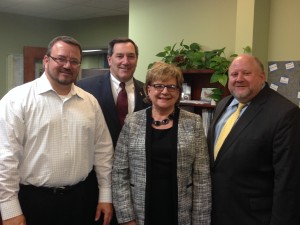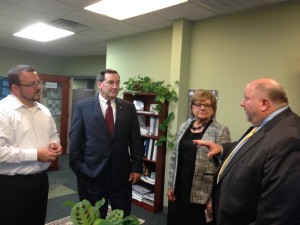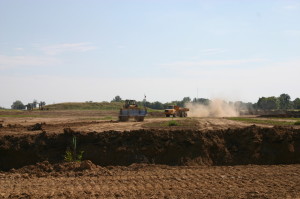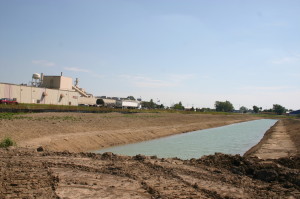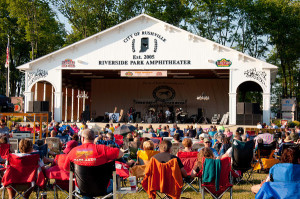Duke Energy to help prepare Rush County industrial building for potential industrial development
Duke Energy Indiana has selected 100,000 square feet of available space at the Industrial Jordan Manufacturing Building in Rush County for the utility’s 2015 Site Readiness Program. The building is located at 1250 Commerce Drive in Rushville.
The Site Readiness Program is a key component of Duke Energy’s economic development model. It identifies, evaluates, and improves sites in the company’s service territory for potential industrial development.
“We see distinct potential for this available building space to attract businesses that can bring economic growth to this area,” said Cathy Wenning, Duke Energy Indiana community relations manager for Rush County. “Helping promote economic development is an important part of our commitment to serving our customers.”
As part of Duke Energy’s evaluation of the Rushville location, site-selection consultant InSite Consulting will conduct a comprehensive assessment. Based on consultant recommendations, Duke Energy will collaborate with county leaders and local economic development professionals to develop a strategy for increasing the industrial building’s marketability and help prepare the space for future businesses.
Schmidt Associates, an architectural firm in Indianapolis, will produce conceptual drawings and site plans.
“The Duke Energy Site Readiness Program reinforces our work to attract jobs and industries to this area,” said John McCane, executive director of the Rush County Economic and Community Development Corporation. “We appreciate Duke Energy’s partnership and collaboration, and we look forward to seeing the consultant’s final recommendations.”
The recommendations from the site consultant will be presented to local officials in early summer. Duke Energy will also present a check for $10,000 to help the community implement the recommendations.
Other sites selected for the Duke Energy Indiana 2015 Site Readiness Program include properties in Clark, Howard and Vermillion counties.
Ideal properties for Duke Energy’s Site Readiness Program are 60 acres or larger, served by the utility, or a vacant industrial building at least 20,000 square feet identified to support renewed industrial growth and sustainable development in a community.
Duke Energy Indiana’s overall economic development program has also been consistently named by Site Selection magazine as one of the nation’s “Top 10 Utility Economic Development Programs.” Since 2008, the company has participated in the creation of nearly 20,000 jobs and total capital investment of approximately $4.5 billion.
For more information about Duke Energy Indiana’s economic development programs, visit www.locationindiana.com.
Duke Energy
Duke Energy Indiana’s operations provide about 7,500 megawatts of owned electric capacity to approximately 810,000 customers in a 23,000-square-mile service area, making it the state’s largest electric supplier.
Headquartered in Charlotte, N.C., Duke Energy is a Fortune 250 company traded on the New York Stock Exchange under the symbol DUK. More information about the company is available at: www.duke-energy.com.


